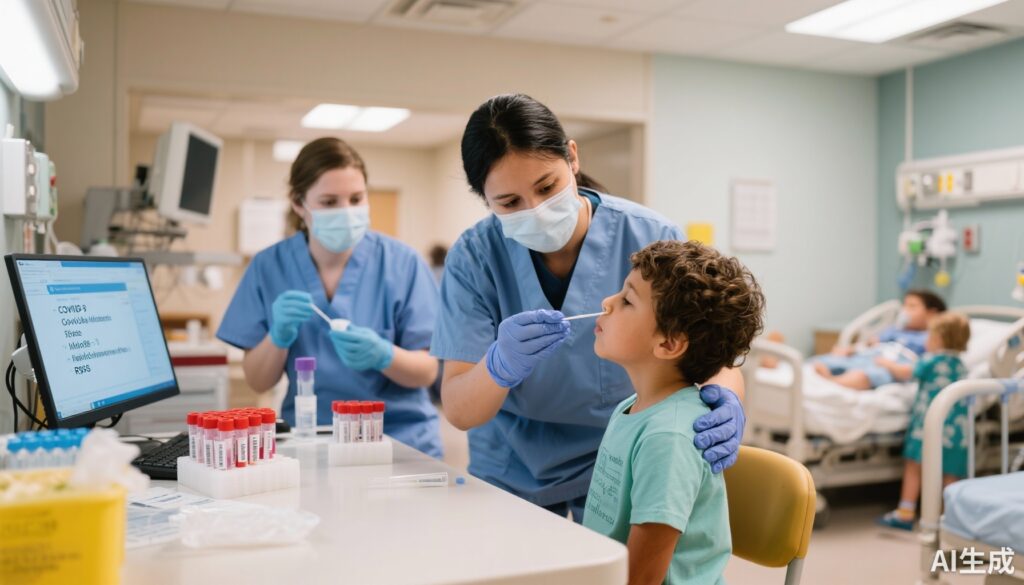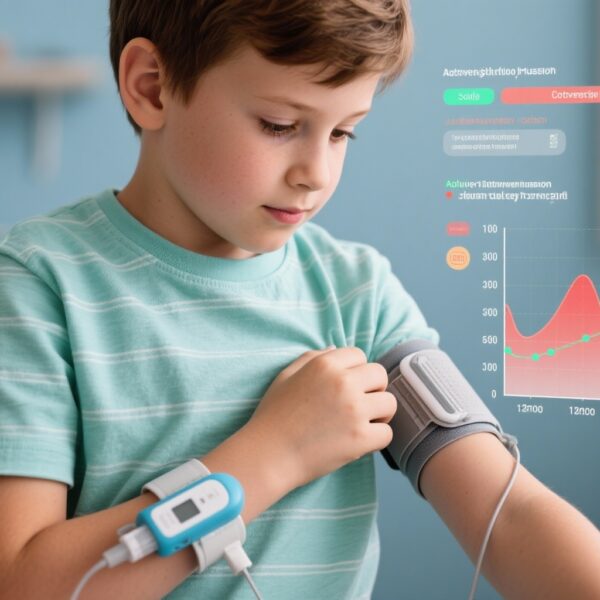Highlight
This longitudinal surveillance study examined clinical testing trends for SARS-CoV-2, influenza, and respiratory syncytial virus (RSV) in children and adolescents hospitalized with acute respiratory illness between 2016 and 2024 across six US medical centers. Key highlights include a marked decrease in clinical SARS-CoV-2 testing over recent seasons coinciding with increases in influenza and RSV testing. Approximately three-quarters of hospitalized youths underwent clinical testing for each virus by the 2023-2024 season. Clinical testing was more likely among younger children, those admitted to intensive care, or those with underlying medical conditions. Despite extensive testing, a considerable fraction of cases were identified exclusively by prospective surveillance molecular testing, underscoring potential underrecognition in routine clinical practice.
Background
Acute respiratory illnesses in pediatric populations pose substantial morbidity and healthcare burden, especially during winter seasons when viral pathogens like influenza and RSV are prevalent. The emergence of SARS-CoV-2 in 2020 introduced additional complexity in diagnosing respiratory illnesses in children due to overlapping clinical presentations and the need for effective surveillance to guide clinical management and public health response. Clinical testing practices critically influence the identification of cases in epidemiologic studies evaluating disease burden and vaccine effectiveness. However, data detailing real-world clinical testing frequencies and patient factors associated with testing in hospitalized youths over time remain sparse.
Study Design and Methods
This cross-sectional analysis utilized data from the New Vaccine Surveillance Network (NVSN), employing prospective systematic molecular surveillance testing alongside abstraction of clinical molecular testing records from electronic health records at six US medical centers. The population included 26,073 children and adolescents under 18 years hospitalized with acute respiratory illness from 2016 to 2024, with particular focus on winter respiratory seasons. Surveillance testing targeted SARS-CoV-2 (post-2020), influenza viruses, and RSV. Clinical testing was defined as molecular assays ordered during hospitalization. Outcomes assessed included the proportion of patients undergoing clinical testing by virus, time period, age strata, and clinical severity defined by ICU admission. Adjusted odds ratios (aORs) were calculated to identify patient characteristics associated with clinical testing. The study further estimated the case fraction detected solely by surveillance testing without clinical testing to quantify missed diagnoses in routine care.
Key Findings
Among 26,073 hospitalized youths, 55.5% were under 2 years of age and 40.1% had underlying medical conditions. During the initial COVID-19 pandemic season (2020-2021), SARS-CoV-2 clinical testing was high (90.4%) but declined significantly to 76.0% by the 2023-2024 season (P < .001). In contrast, clinical testing for influenza viruses and RSV increased markedly between pre-pandemic seasons (2016-2020) and 2023-2024. Influenza testing rose from 44.5% to 74.4% (P < .001), and RSV testing from 42.0% to 71.6% (P < .001). By the 2023-2024 season, approximately 75% of hospitalized youths underwent clinical molecular testing for each virus.
Surveillance testing identified notable proportions of virus-positive cases that were not captured through clinical testing alone: 20.5% for SARS-CoV-2, 27.3% for influenza, and 29.6% for RSV. These findings illustrate that clinical testing underestimates viral infection prevalence in this population.
Multivariable logistic regression demonstrated that ICU admission was strongly associated with increased likelihood of clinical testing for all viruses (for SARS-CoV-2, aOR 2.62; 95% CI, 2.06-3.33). Similarly, children with underlying medical conditions had higher odds of clinical testing (SARS-CoV-2: aOR 1.56; 95% CI, 1.33-1.84). Younger age (<2 years) was a consistent factor positively associated with clinical testing across viruses and time periods.
Expert Commentary
This comprehensive analysis highlights evolving clinical diagnostic behaviors during the pandemic and post-pandemic period. The observed decline in SARS-CoV-2 clinical testing might reflect shifting clinical guidelines, testing resource constraints, or changing epidemiology including widespread immunity and viral circulation patterns. Conversely, heightened attention to influenza and RSV testing likely relates to renewed recognition of their burden after COVID-19 disruptions and availability of novel preventive measures such as vaccines and monoclonal antibodies.
The substantial fraction of cases only detected through surveillance underscores potential underdiagnosis in routine care, which could bias disease burden and vaccine effectiveness studies relying solely on clinical testing data. These findings support integrating systematic surveillance assays or enhancing clinical testing strategies, particularly in high-risk subsets like ICU patients or those with comorbidities, to capture true disease incidence.
Although the multicenter design and prospective surveillance represent strengths, limitations include potential variability in clinical testing practices across centers, changing testing technologies, and inability to evaluate clinical outcomes related to testing patterns. Further research should contextualize these testing patterns with evolving viral variants, vaccination status, and clinical outcomes to optimize diagnostic frameworks.
Conclusion
Between 2016 and 2024, clinical testing practices for respiratory viruses in hospitalized pediatric populations have shifted substantially, with declining SARS-CoV-2 testing and rising influenza and RSV testing. Approximately one-quarter of viral infections remain undetected by clinical testing alone, emphasizing the importance of systematic surveillance for accurate epidemiologic assessment and informed clinical management. Patient characteristics such as ICU status and underlying conditions strongly influence testing likelihood. These insights are critical for interpreting existing research reliant on clinical testing data and for guiding future testing protocols amid an evolving landscape of respiratory viral pathogens.
Funding and Trial Registration
This study was supported by the Centers for Disease Control and Prevention and conducted by the New Vaccine Surveillance Network. Clinical trial registration and detailed funding statements are available in the original publication.
References
Toepfer AP, Rutkowski RE, Sahni LC, et al; New Vaccine Surveillance Network Collaborators. Clinical Testing for COVID-19, Influenza, and RSV in Hospitalized Youths, 2016-2024. JAMA Netw Open. 2025;8(9):e2531499. doi:10.1001/jamanetworkopen.2025.31499. PMID: 40952744; PMCID: PMC12439058.



